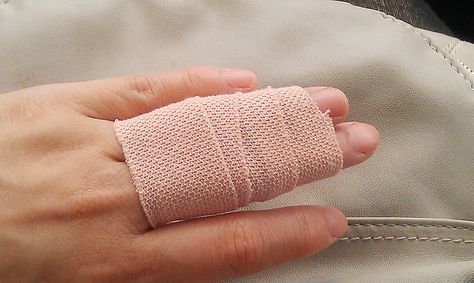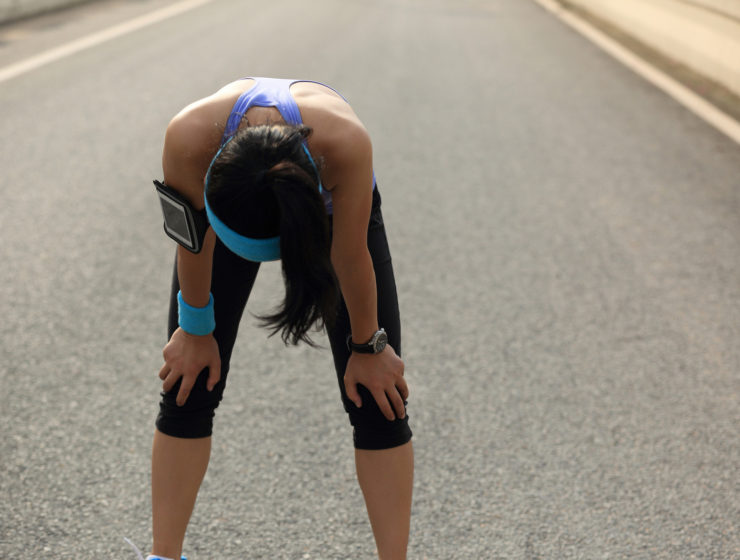How do you heal a sprained finger fast?
When healing a sprained finger and you’re trying to recover fast, it’s important to follow the sports injury treatment using the P.R.I.C.E. principle:
- Protecting your finger by using a brace
- Resting your finger by minimizing use
- Icing your finger several times a day
- Compression on your finger utilizing a wrap
- Elevate your finger as much as possible
The first principle is protecting your finger
The purpose of protection is to avoid further injury to the area by protecting the injured finger. The type of protection used varies depending on the injured area but may include a finger wrap, aluminum finger splint, or protective tape and using the buddy system. These devices are applied so that the injured finger is protected from further injury.

Rest should not be taken lightly
Rest is the second component of the P.R.I.C.E. principle and resting purpose of resting allows the body’s own healing processes to naturally occur without being impeded by movement of the injured area. Any increase in movement of an injured tissue results in increased circulation to the area which in turn may result in further damage to the injured tissue and/or increased swelling.
Ice, ice and more ice
Ice is another component of the P.R.I.C.E. principle and there are a number of types of cryotherapy that can be used effectively to treat a sprained finger. The most common is ice packs made of crushed ice because the crushed ice is more comfortable for the athletes and conforms to the contours of the injured finger better than cubed ice. Ice can be placed into plastic or Ziploc bags. A light barrier should be placed between the skin and the ice bag (paper towel) to prevent injury to the skin during the application of the ice.
The ice pack can be secured with an ace bandage to keep it steady and from moving. The ice should be applied for 20 minutes at a time and then removed. This can be repeated every two hours while the athlete is awake.
Cold water immersion is effective treatment for a sprained finger because the cold water can surround all of the injured area rather than just one side of the finger as in the application of an ice pack. Cold water immersion can easily be accomplished with the use of a large cup, water, and the addition of some ice.
Compression to minimize finger swelling
When the ice pack is removed, a compression wrap should be applied to the injured finger. The compression wrap serves as a mechanical barrier so that swelling is minimized in the injured finger area. There are a number of finger compression wraps available on the market and here are a few choices.
Elevate your hand and finger
The last component of the P.R.I.C.E. principle is elevation. Elevation is important immediately post-injury to reduce the amount of blood flow to the injured finger. The key is that the athlete needs to have the injured area above his/her heart level.
Range of motion exercises
As the swelling begins to diminish, the athlete can begin gentle range of motion exercises to begin to regain the flexibility of the finger. This can be accomplish using a number of different items including a tennis ball, racquetball, or rolled sock.
The athlete places the object in his/her hand and gently squeezes. This exercise increases both the range of motion of the joint plus the strength of the muscles in and around the injured joint. The athlete gradually squeezes the ball and then relaxes. This can be performed ten times every hour.
Care should be taken for the athlete not to squeeze so hard that it causes pain. As the ligament and tissue heal, the athlete can gradually increase the intensity of the grip on the ball.
Sprained Finger and When to See the Doctor
Hundreds of athletes sustain acute injuries everyday, which can be treated safely at home using the P.R.I.C.E. principle. But if there are signs or symptoms of a serious injury, emergency first aid should be provided while keeping the athlete calm and still until emergency service personnel arrive. Signs of an emergency situation when you should seek care and doctor treatment can include:
- Bone or joint that is clearly deformed or broken
- Severe swelling and/or pain,
- Unsteady breathing or pulse
- Disorientation or confusion
- Paralysis, tingling, or numbness
Can Telemedicine Help?
Telemedicine is gaining popularity because it can help bring you and the doctor together quicker and more efficiently. It is particularly well suited for a sprained finger to quickly understand the severity and facilitating the diagnoses and treatment. Learn more about speaking with a sports specialized provider via SportsMD’s 24/7 Telemedicine Service.
Recent Posts

Physical fitness strengthens your children’s bones, muscles, lungs, and heart. But did you know it can also improve their academic performance? Read on to find what the latest evidence says. Increasing your…

Nutrition for injury recovery is often overlooked but a key element to faster recovery. Lets face it, athletes get injured and it’s part of the deal. Be it a torn ACL, Achilles…

Athletes tend to do a good job of training their muscles, heart and lungs. But some of them (particularly endurance athletes and those in running sports) commonly fail to train their gut.…

“I feel tired a lot. What vitamins will give me more energy?” “When I get home from work, I’m just too tired to cook dinner…” “I feel like taking a nap most…

Some people try so hard to not eat it, but they inevitably succumb, and inevitably feel guilty. If you share the same love-hate relationship with chocolate, keep reading. And be thankful this so-called…


